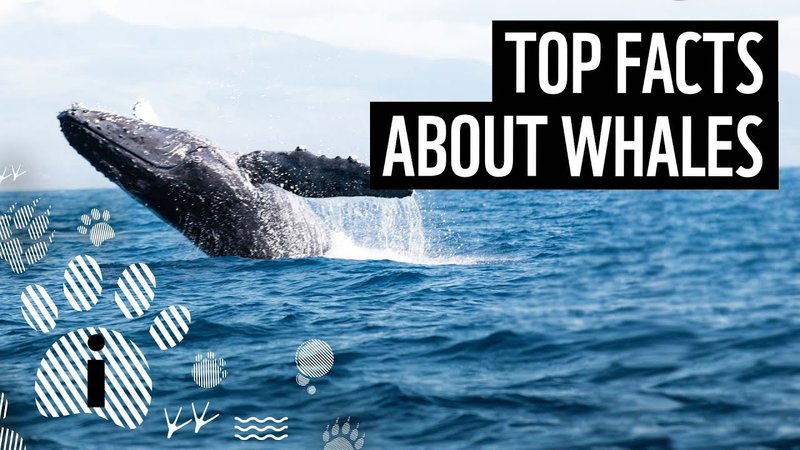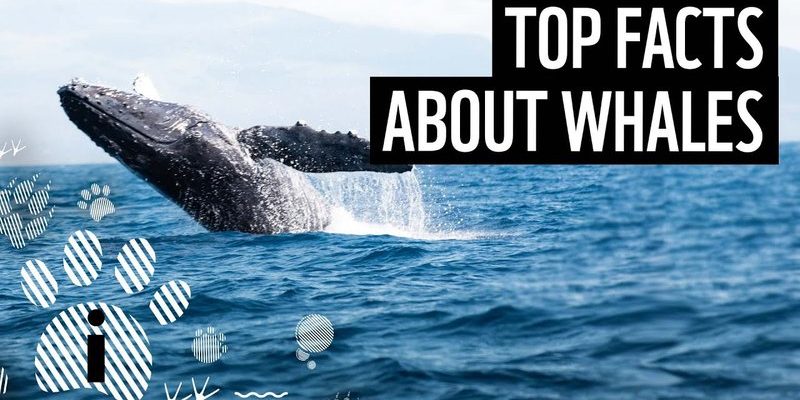
In this article, we’re diving deep into the world of whales. From the enormous blue whale to the acrobatic humpback, we’ll explore ten jaw-dropping facts about these incredible mammals. Whether you’re a seasoned ocean lover or just curious about the world beneath the waves, you’ll find something new to learn. So grab your favorite beverage, get comfy, and let’s swim through the wonders of the whale world!
1. The Blue Whale: The Largest Animal on Earth
When we talk about size in the animal kingdom, the blue whale takes the crown— and it’s not even close. These majestic beings can grow up to 100 feet long and weigh as much as 200 tons! To put that in perspective, a blue whale’s heart can weigh as much as a small car. Just imagine that heartbeat echoing through the ocean depths!
Blue whales aren’t just massive, though. They have a distinctive mottled blue-gray coloration that helps them blend into the ocean’s depths. Their size is a result of evolutionary adaptations that help them thrive in their marine environment. You might be wondering how something so big can live in the ocean. The answer lies in their diet. These giants primarily consume tiny shrimp-like creatures called krill. They can eat several tons of krill in a single day, showcasing their unique place in the marine food chain.
2. Whales Can Communicate with Each Other
Here’s the thing: whales are not just swimming around in silence. They have a rich form of communication that science is still trying to fully understand. Different species of whales use complex vocalizations known as whale songs to communicate. For example, humpback whales are famous for their beautiful and haunting songs that can travel for miles underwater.
These songs can serve various purposes, such as attracting mates or navigating through the ocean. Researchers have discovered that the songs can change over time, almost like a whale version of a musical trend. Isn’t that fascinating? Imagine whales having their own pop charts under the sea!
3. They Are Mammals, Not Fish
You might think of whales as big fish, but here’s the truth: they are mammals, just like you and me. That means they breathe air, give live birth, and nurse their young with milk. This distinct classification sets them apart from fish, which lay eggs and breathe through gills.
Whales have lungs, not gills, allowing them to surface for air. They can hold their breath for long periods—some species can stay underwater for up to 90 minutes! Isn’t that impressive? Picture a whale surfacing to take a deep breath before diving back into its underwater realm.
4. Whales Have a Unique Feeding Method
Feeding is a fascinating aspect of whale behavior. Depending on the species, whales use different methods to catch their food. For example, baleen whales—like the blue whale—filter-feed by taking in huge amounts of water and then using their baleen plates to strain out krill.
On the other hand, toothed whales, such as orcas and sperm whales, hunt for larger prey. They often use echolocation, a technique that involves emitting sounds and listening for echoes. This method helps them locate prey even in dark, murky waters. So whether they’re gracefully filtering krill or skillfully hunting fish, whales have adapted some truly unique and effective feeding strategies.
5. Whale Migration: The Longest Journey
Some whales embark on epic migrations, covering thousands of miles each year in search of food or breeding grounds. Humpback whales are known for their remarkable journeys that can reach up to 16,000 miles round-trip!
These migrations usually start in warmer waters, where mothers give birth during the winter months, and then they travel to colder waters teeming with food during summer. Imagine a family road trip, but instead of a car, it’s a whale swimming through the vast ocean—breathtaking, right? Understanding their migration patterns helps researchers protect these creatures and their habitats.
6. They Can Live a Long Time
Whales have impressive lifespans that can rival humans and sometimes exceed them. For instance, bowhead whales are believed to live over 200 years! Imagine witnessing two centuries of ocean changes and historical events.
Age can be determined by examining the layers of their earwax, which build up over the years. Scientists can analyze these layers to count a whale’s age like counting tree rings. This revelation highlights how these ancient creatures have adapted to their environments and survived through significant shifts in ocean ecosystems.
7. Some Species Are Endangered
Despite their incredible adaptations and resilience, many whale species face serious threats. Activities like commercial whaling, habitat destruction, and climate change have led to significant declines in their populations. The North Atlantic right whale, for instance, is critically endangered, with only about 340 individuals remaining.
Conservation efforts are underway to protect these majestic creatures. Organizations work tirelessly to monitor populations, promote awareness, and advocate for stricter regulations to ensure whales can continue to thrive in their ocean home. It’s a reminder that we all play a part in protecting our planet’s wildlife.
8. Whales Can Hold Their Breath for a Long Time
You might think you can hold your breath for a while, but whales have an impressive ability to stay underwater. Depending on the species, they can hold their breath for anywhere between 30 minutes to over an hour! For instance, the sperm whale can dive deep and hold its breath for up to 90 minutes while hunting for squid.
Their ability to slow their heart rate and utilize oxygen efficiently allows them to thrive during these lengthy dives. It’s like having an onboard oxygen tank that’s built to last in the depths of the ocean, making them expert divers.
9. Whales Have a Unique Social Structure
Whales are social animals, often living in groups called pods. These pods can vary in size and structure depending on the species. For instance, orcas, which are actually the largest members of the dolphin family, have complex social structures and can live in family groups for generations.
This social behavior helps them to protect each other and share hunting techniques. You might be surprised to learn that their bonds can be as strong as family ties, showcasing their intelligence and emotional depth. Watching a pod work together to catch food or care for their young is a beautiful testament to their social nature.
10. Whales Have Intriguing Cultural Behaviors
Believe it or not, whales exhibit cultural behaviors that are passed down through generations. Just like humans, they have unique traditions that can vary from pod to pod. For example, different groups of orcas have distinct hunting techniques, like using waves to wash seals off ice floes, which is something they learn from each other.
Research into their behaviors is ongoing, revealing more about how they communicate and teach one another. This fascinating idea gives us a glimpse into the rich inner lives of whales and the bonds they share, proving that they are not just creatures of the sea but also brilliant social beings.
In conclusion, the world of whales is filled with wonder and complexity. From their sheer size to their sophisticated social structures, there’s so much to admire about these gentle giants. As we learn more about their lives, it’s crucial to recognize the need for conservation and protection. After all, the future of these magnificent creatures depends on our understanding and care for their ocean home. So let’s keep diving into the depths of their world, because there’s always more to discover!

